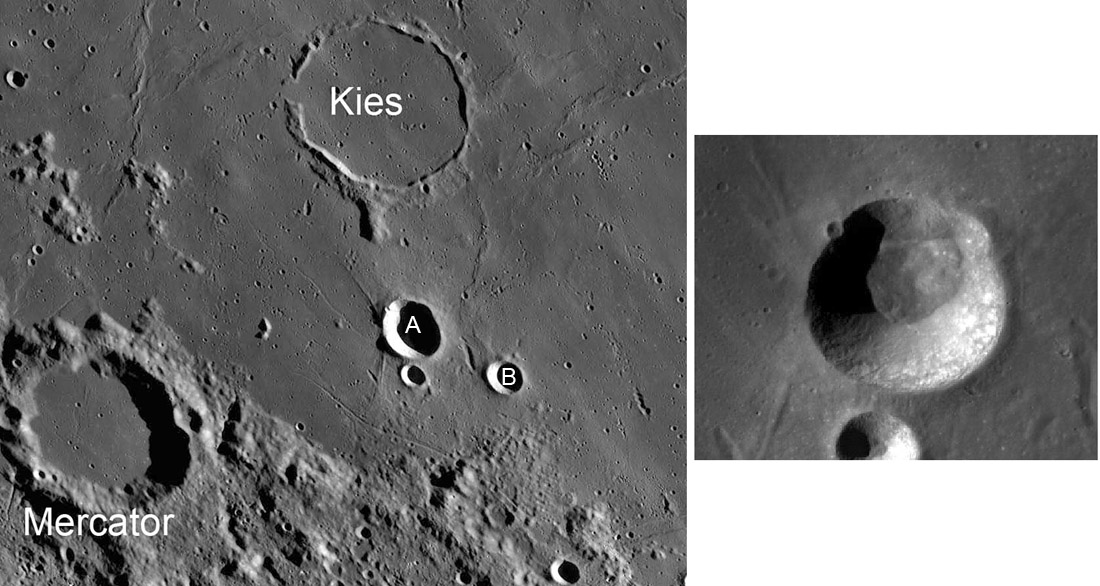Difference between revisions of "December 19, 2011"
| Line 21: | Line 21: | ||
Rükl plate [http://the-moon.wikispaces.com/R%C3%BCkl+53 53]<br /> | Rükl plate [http://the-moon.wikispaces.com/R%C3%BCkl+53 53]<br /> | ||
<br /> | <br /> | ||
| + | <p><b>Yesterday's LPOD:</b> [[December 18, 2011|Continuing Discovery]] </p> | ||
| + | <p><b>Tomorrow's LPOD:</b> [[December 20, 2011|The Pacific View]] </p> | ||
<hr /> | <hr /> | ||
Revision as of 11:20, 7 February 2015
Single Crater Septum

left: image from LRO WAC mosaic, and right: close-up of Kies A from LRO WAC Act-REACT Quick Map
While looking at the wonderful nomenclature map Maurice Collins constructed with the LRO WAC mosaic I noticed a strange curved ridge
tangent to Kies A. It immediately reminded me of a similar curved ridge or septum between Plato K and KA. This latter case is explained
as being created by converging ejecta from two simultaneously formed craters, but Kies A is just a single crater, although its shape is non-
round. So I found a higher Sun LROC WAC view from the Quick Map - thanks ASU/NASA for two different mosaics! - that doesn't suggest
two almost completely overlapping simulataneous craters. There is a small scallop on the northeast side where a collapse removed a small
bite from the rim. Then I remembered a second case of a similar single crater arc at Cauchy. Cauchy is a perfectly normal circular crater so
the curved ridge does not require an unusual crater to form. I wonder if an oblique impact could produce such a curved septum? Neither
Cauchy nor Kies A is young enough to preserve rays to provide evidence for non-vertical impacts. Danny Caes had actually mentioned both
Kies A and Cauchy in an LPOD comment in 2009 and he wondered if there were more of them, which is still a good question. Finding more
examples might lead to clues as to their origin.
Chuck Wood
Related Links
Rükl plate 53
Yesterday's LPOD: Continuing Discovery
Tomorrow's LPOD: The Pacific View



